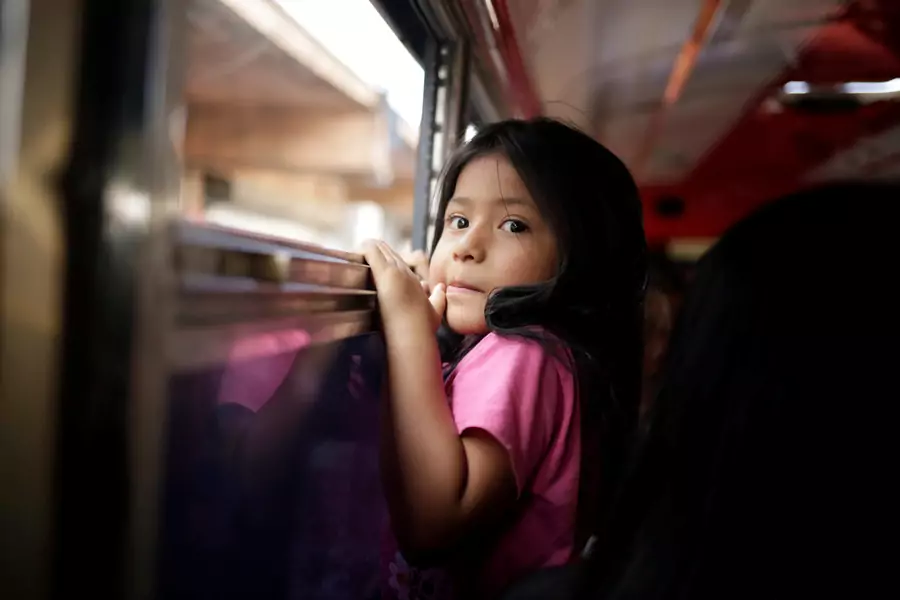Bringing a Gender Lens to the Immigration Debate

Last week, President Trump formally launched his reelection campaign. Twenty-thousand Trump supporters turned out in the battleground state of Florida to hear his seventy-six minute speech, during which he talked at length about immigration – the centerpiece of his 2016 campaign.
Since Trump was elected to office, immigration has remained front and center. From the border wall to the policy of family separation—in newsrooms, classrooms, courtroom, and around the family dinner table, Americans are talking about immigration.
More on:
Last week, Adjunct Senior Fellow Catherine Powell presided over a CFR roundtable, “Bringing a Gender Lens to Immigration: Domestic Violence–Based Asylum and Family Separation” with Lee Gelernt, deputy director of the American Civil Liberties Union (ACLU) Immigrants’ Rights Project, and Sandra Park, senior staff attorney with the ACLU’s Women’s Rights Project.
Focus on Children
A central insight from the roundtable was that the debate on immigration shifted when photos of children being taken away from their parents began appearing in media, including social media feeds. The stories of individual children—including recently a four-month-old baby taken from their parents at the border—have spurred outrage.
Even prominent Republicans expressed outrage. Former First Lady Laura Bush penned a scathing op-ed in the Washington Post, comparing the Trump administration’s “Zero Tolerance Policy” to the shameful decision to intern U.S. citizens and noncitizens of Japanese descent during World War II. Thousands of Americans gathered at protests and marches across the country. “I have literally never seen Americans show up for immigrants like this,” said Jess Morales Rocketto, Political Director of the National Domestic Workers Alliance. Park and Gelernt credit this outpouring of outrage with Trump’s decision to walk back the so-called Zero Tolerance policy.
In June 2018, President Trump signed an executive order meant to end the practice of separating families at the border - though the order did nothing to address the plight of the thousands of children who had already been taken away from their families. And just this past week, we learned that hundreds of migrant children were forced to stay in a filthy federal border facility without access to soap, clean clothes or adequate food. The New York Times reported "children as young as 8 caring for infants, toddlers with no diapers, and children who said they were waking up at night because they were hungry."
There is at least still one area of bipartisan consensus. For the most part, Democrats and Republicans believe that separating children from their families is cruel and immoral. Even when it comes to the polarizing issue of immigration, most Americans believe that children are “innocent victims,” and that they are brought to the United States through no “fault” of their own. (The subtext here is that their “irresponsible” parents brought them here, but the children themselves should not be penalized.) Despite the race and gender tropes that Trump uses to gain support for restrictive immigration, many Americans draw the line at kids – a politically salient insight that trailblazer, Marion Wright Edelman, recognized decades ago, when she established the Children’s Defense Fund.
More on:
But What About Women’s Rights?
Is there a lesson that women’s rights activists can take away from Trump’s shift on family separation?
President Trump’s immigration policies have had an outsize impact on women. In particular, the administration’s efforts to end asylum protections for survivors of domestic-based violence – as Park explained. Yet, these policies have not galvanized mass action in the way that family separation has.
One possible strategy to spur public action is for activists to reframe women’s issues so that they center on children. That’s a fraught approach, as a primary goal of the women’s rights movement has been to value women for our own sake, not merely as vessels for childbearing and rearing. But since women continue to be primary caretakers, the reality is that the treatment of children often implicates women. For instance, there have been several instances of “targeted enforcement actions” in which ICE agents arrest women accompanied by their children, after these women appear in court over domestic violence allegations. A Colombian mother of two called the police after her fiancé, a U.S. citizen, assaulted her and her fifteen-year-old son. Federal agents handcuffed and arrested the woman and her son outside a courthouse when they appeared for a hearing about the incident. Her other son, a toddler, was left behind at the courthouse’s daycare center.
Policies that may result in women being too afraid of deportation to report abuse are abhorrent for that reason alone. Nevertheless, they have not resulted in the same level of outrage that Trump’s Zero Tolerance policy did. But these policies ultimately result in a similar outcome—families are separated and children are left without parents.
Recall how photos of a Syrian child—whose lifeless body washed up on a beach—re-engaged the interest of many (if only momentarily) in the protracted Syrian civil war. This recent example shows how a focus on children can spur action on a massive scale by shining a light on the human ramifications of policy.
Going Forward
The jury is still out on what moves people from apathy to outrage and action. But outrage and action are what is needed now. If Americans are unable to find a way to push back against Trump’s immigration policies, we will suffer the consequences to our economy and prestige. After all, studies indicate that immigrants contribute more to the country than they take in benefits, with second generation immigrants, contributing more in taxes than other native-born individuals. President Trump should be working with Central American countries to address the violence and poverty that are driving people to migrate. Because walls will not keep desperate people out. Americans- Republicans and Democrats alike- should agree to agree on the facts: using the threat of tariffs to ram and expand a poorly conceived immigration agenda program is bad for our economy, relationships with our neighbors, and the values the truly make American great.
 Online Store
Online Store